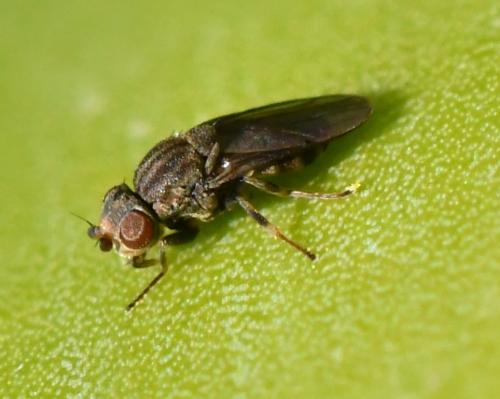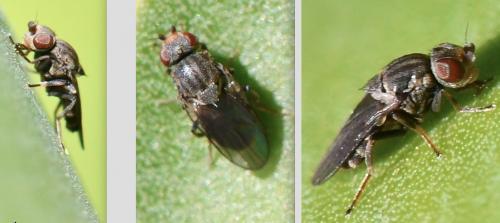Thread subject: Diptera.info :: Aphanotrigonum trilineatum
Posted by GAREL Jean-Michel on 02-03-2021 06:48
#1
Hello,
this Chloropidae was observed yesterday (March 1st) in our garden. This specimen is very similar to the picture added in your gallery by Dmiitry GAVRYUSHIN. I believe that it is Aphanotrigonum trilineatum. Do you agree with my identification ? Thanks for your responses. Sincerely yours, Jean-Michel Garel.

Jean-Michel GAREL : France : Brannay : 89150 : 01/03/2021
Altitude : NR - Taille : 1 mm
Réf. : 276587

Jean-Michel GAREL : France : Brannay : 89150 : 01/03/2021
Altitude : NR - Taille : 1 mm
Réf. : 276588
Edited by GAREL Jean-Michel on 02-03-2021 08:34
Posted by Xylosoma on 02-03-2021 08:12
#2
Hi Jean-Michel,
I think that there are not enough marginal setae on scutellum for Aphanotrigonum trilineatum as you see on the specimen figured by JariF in the gallery. (You accidently writing of Phoridae but the family Chloropidae is correct.)
Regards
Xylo
Edited by Xylosoma on 02-03-2021 08:13
Posted by GAREL Jean-Michel on 02-03-2021 08:37
#3
Thanks Xylosoma. Is the genus Aphanotrigonum correct ? Is-it possible to propose a species ? Marginal setae on the scutellum are clearly seen in the specimen of JariF but not for the picture of Gavryushin !
Edited by GAREL Jean-Michel on 02-03-2021 08:49
Posted by von Tschirnhaus on 04-03-2021 14:04
#4
Chloropidae: Aphanotrigonum trilineatum (Meigen, 1830), junior synonyms Oscinis annulifera Zetterstedt, 1848 and Aphanotrigonum beschovskii Dely-Draskovits, 1981. A very similar species is Aphanotrigonum nigripes (Zetterstedt, 1848) with very weak or missing brown stripes, mostly shorter wings and on average a smaller body size. A. trilineatum has phytosaprophagous larvae developing in Poaceae (grasses), including cereals. It is not rare all over Europe until Japan und Palaearctic China and occurs also in North America. On bogs and deforested areas within coniferous forests it is especially abundant (trials with yellow pan traps by M.v.T.). Flies are overwintering like several Elachiptera species. One feature of A. trilineatum and A. nigripes is singular among European chloropids: The lateral part of most abdominal tergites is separated from the dorsal part by a weak interruption. By this movability of the tergites the abdomen can become inflated after the ingestion of much food or during egg ripening. Thus, it is better protected by the lateral perpendicular parts of the tergites than in normal chloropid species. This morphological detail was not yet mentioned in the literature, e.g. in Nartshuk & Andersson (2012), Fauna ent. scand 43, or Kanmiya (1983), Mem. ent. Soc. Wash. 11.

